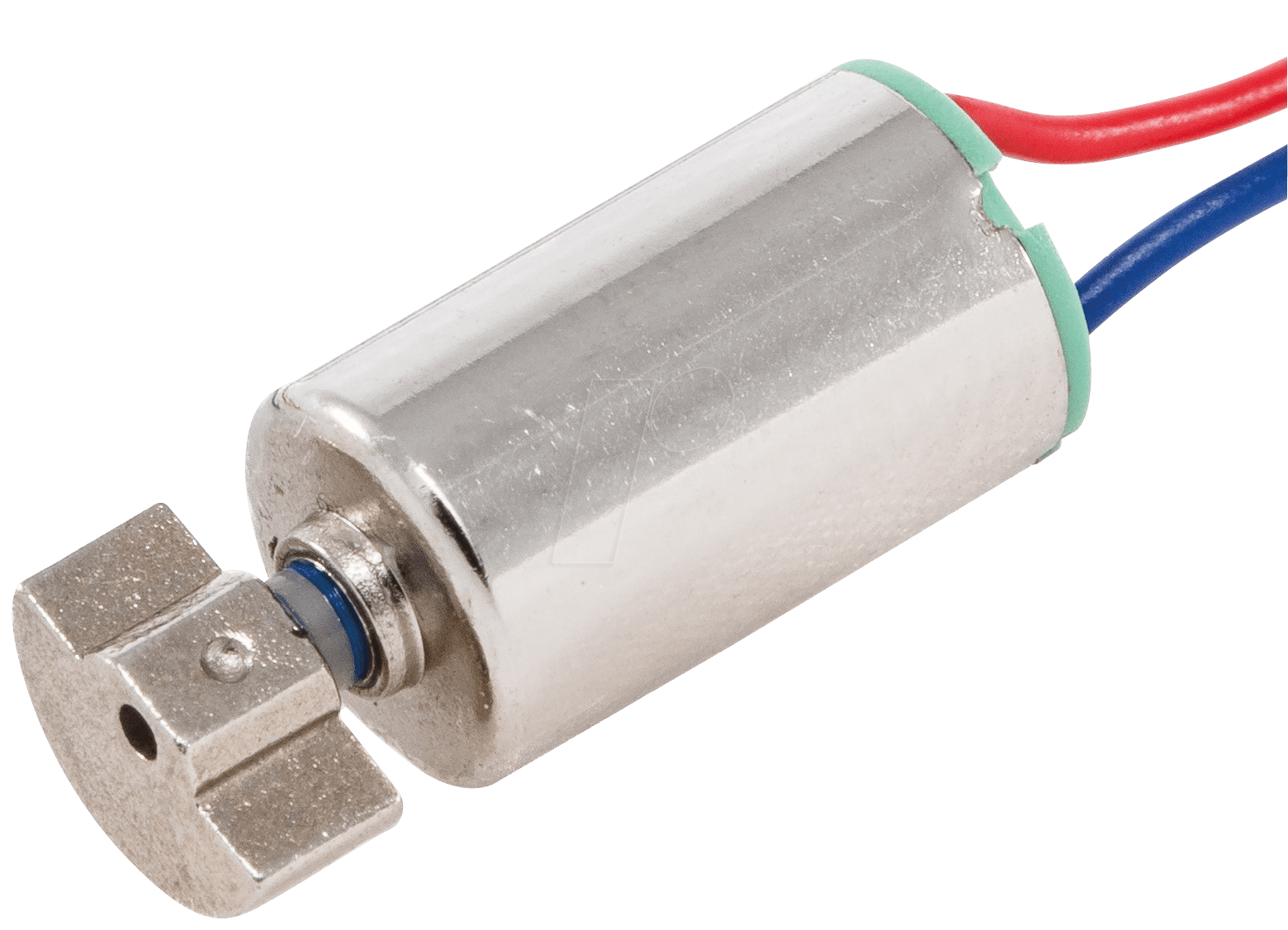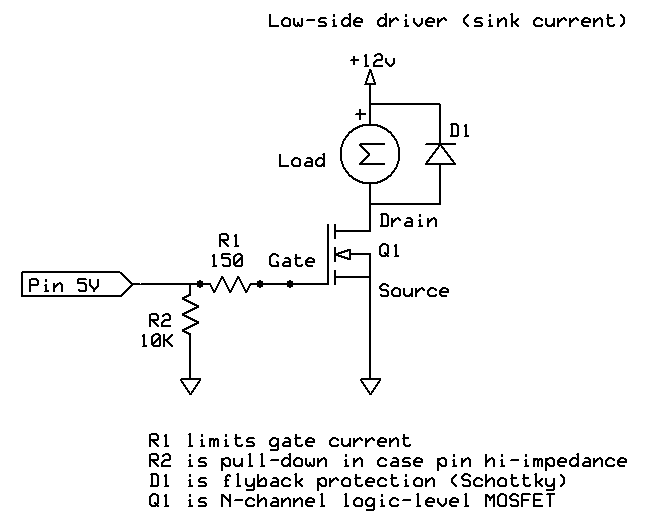Hi, im using an arduino to run some shaking motors for my racing rig. My only problem is that the motor runs on 0V-12V depending on the in game cars RPM and my arduino mega can only output 0V-5V. So my question is what is the best way to step up the voltage and keep the same signal just amplified.
Thanks in advance!
[u]Here is a motor driver schematic[/u].
arduino mega can only output 0V-5V.
It actually puts-out 0 or 5V. analogWrite() is [u]PWM[/u] which can average between 0 and 5V to control the speed of a motor. PWM also works "boosted" to 12V.
...Even with a 5V motor it doesn't put-out enough current so you'd still need a driver.
By shaking motor do you mean a vibration motor?
Like this?

If so it’s just a simple on or off no PWM needed. A circuit like this

wolframore:
By shaking motor do you mean a vibration motor?Like this?
If so it’s just a simple on or off no PWM needed. A circuit like this
Yes like that. But I control the intensity of the vibrations with the voltage so i need more than just on or off.
DVDdoug:
[u]Here is a motor driver schematic[/u].
It actually puts-out 0 or 5V. analogWrite() is [u]PWM[/u] which can average between 0 and 5V to control the speed of a motor. PWM also works "boosted" to 12V....Even with a 5V motor it doesn't put-out enough current so you'd still need a driver.
I actually did not know that thank you very much! ![]() So i need an amplifier for a PWM signal right?
So i need an amplifier for a PWM signal right?
Yes, PWM will work to average to voltage to your motor... haha if you look at the link we had basically the same idea.
Okay so that will control the voltage on my motor so for example if my arduino signal is avaraged at 2.5V, on the motor there will be 6V right? And one more question on the link there is no specific MOSFET how do i chose the right on? Do you have any recommendations?
AO4484
AOD514
AOD4184
IRL540
IRLZ44N
NDP6020
Need to see ‘your’ final schematic before you select/buy the appropriate MOSFET.
larryd:
AO4484
AOD514
AOD4184
IRL540
IRLZ44N
NDP6020Need to see ‘your’ final schematic before you select/buy the appropriate MOSFET.
I dont have schematics because i just have a motor and an arduino and i need to amplifi it thats all.
Paul, that’s clever, very nice
No, not mine. Click it! ![]()
Still you saw it... the gate voltage is better with your find... I usually don’t like Schottky due to reverse current but depending on PWM frequency it may be necessary.
Well, in this case, the reverse leakage is negligible compared to the motor/ solenoid current; it's just a minor wastage and causes no harm whereas it might in other situations.
The problem the Schottky addresses, is turn-off time. When the diode conducts during the "kickback" from the inductor, if the switching only occurs infrequently, or in any case the "kickback" has entirely dissipated before the current is switched on next, this is of no consequence at all and a common diode is just fine.
But PWM is deliberately used to maintain a proportionate current; you do not want the current to cease so the diode must turn off instantly or it will be absorbing its current surge at the full voltage which the system is switching. ![]()
Paul__B:
Better version of the circuit:
Schottky diode is required for using PWM.
So using this set up what specific MOSFET can i use?
You tell us what the motor specifications are - operating voltage, and stall current. ![]()
Or point us to the datasheet.
Well i dont know exactly what motor it is because its inside a masage mate but i do know that at 12V its pulling 1A.
But how much does it pull when you hold the shaft from moving? That is the stall current and what the FET must be rated for at the very minimum.
That's what we need to know. ![]()
Okay so i measured the stall current and its just under 2A.
Well then, from the ones you mentioned, the IRLZ44 seems to be at least one candidate with an "on" resistance of 28 mΩ as long as you have a full 5 V on the gate which equates to a dissipation of only 112 mW at 2 A (given it is rated for about 50 Amps) so it would not even require a heatsink.
Note I have only analysed that device as the "L" already says it is a logic level device - others may be just as suitable. ![]()

